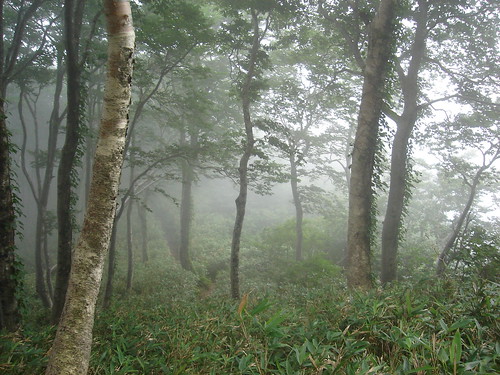Asiasari Radix Extract Grows Hair in Mice and in Human Skin Cells
There are probably hundreds of yet undiscovered plants that may aid in hair loss. The problem is, most of the time we don't even know where to look.
Fortunately, there are some scientists who are dedicated to collecting the strangest looking plants nature has to offer and making hair growth potions out of them. One of the less known plants that shows promise in treating hair loss is Asiasari radix, which is the root of the Asiasarum plant (known as Saishin in Japanese).
In a 2005 study from the Journal of Dermatological Science, Rho et al. report:
Objective:
We examined the effects of 45 plant extracts that have been traditionally used for treating hair loss in oriental medicine in order to identify potential stimulants of hair growth.
Methods:
Six-week-old female C57BL/6 and C3H mice were used for evaluating the hair growth-promoting effects of the plant extracts. Topical application onto the backs of the C57BL/6 and C3H mice was performed daily for 30 days and 45 days, respectively. Protein synthesis was measured by the cysteine uptake assay, using cultured murine vibrissae follicles. Proliferation of the immortalized human keratinocyte cell line (HaCaT) and human dermal papilla (DP) cells was evaluated by the MTT and thymidine incorporation assays. The mRNA levels of several growth factors that have been implicated in hair growth control were measured by reverse transcription-polymerase chain reaction (RT-PCR).
Results:
Among the tested plant extracts, the extract of Asiasari radix showed the most potent hair growth stimulation in C57BL/6 and C3H mice experiments. In addition, this extract markedly increased the protein synthesis in vibrissae follicle cultures and the proliferation of both HaCaT and human DP cells in vitro. Moreover, the A. radix extract induced the expression of VEGF in human DP cells that were cultured in vitro.
Conclusion:
These results suggest that the A. radix extract has hair growth-promoting potential, and that this effect may be due to its regulatory effects on both cell growth and growth factor gene expression.
The authors first rubbed a 1% solution of Asiasari radix extract mixed in 40% ethanol on the backs of mice. According to the paper, the extract induced earlier telogen-to-anagen conversion, which means that the resting phase of the hair got shorter. It also increased the depth and size of the hair follicles.
One possible explanation for the observed hair growth is that the extract increased the uptake of cysteine, an amino acid, in mouse hair follicles cultured in vitro by 129%. Cysteine uptake has been shown to correlate with hair follicle growth.
The authors also tested the effect of Asiasari radix on human kerotinocyte cells and cultures of human hair dermal papilla cells. The proliferation of the cells increased by 106.5% and 115%, respectively. In layman's terms this means that the extract increased the number of cells that are involved in producing hair.
Vascular endothelial growth factor (or VEGF) expression was also increased by the application of the extract. VEGF plays an important role in angiogenesis, the growth of new blood vessels from pre-existing vessels. VEGF expression is typically higher during the anagen (growth) phase and lower during the catagen (shedding) and telogen (resting) phases of hair. It is not certain whether VEGF directly affects hair growth, but it has been suggested that one of the ways that Minoxidil works is by regulating the expression of VEGF.
Interestingly, Asiasari radix did not inhibit type II 5-alpha-reductase, which is the enzyme that converts testosterone to DHT. DHT, in turn, is the hormone that causes hair loss in those individuals who are genetically susceptible. This means that Asiasari radix grows hair through other mechanisms than reducing DHT.
As far as I know, there is currently no product on the market that has Asiasari radix in it, so for now you'll have to scout the Japanese woods and make your own Saishin potion.
For more information on hair growth, see these posts:
Vitamin E Tocotrienols May Grow Hair in Humans
3 Quick Ways to Find Out Whether Your Hair Growth Product is Working
Green Tea Extract Grows Hair in Vitro, May Work in Vivo
Mixture of 5-Aminolevulinic Acid and Iron Increases Hair Growth in Mice









0 kommenttia:
Post a Comment